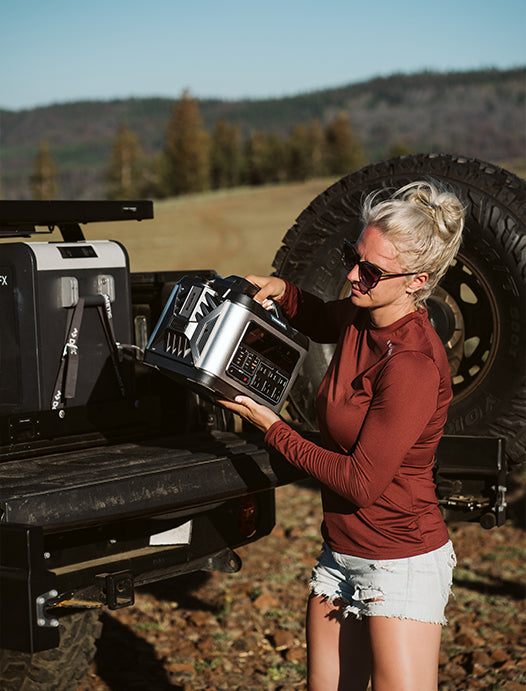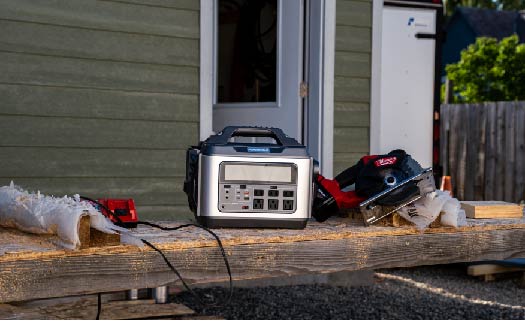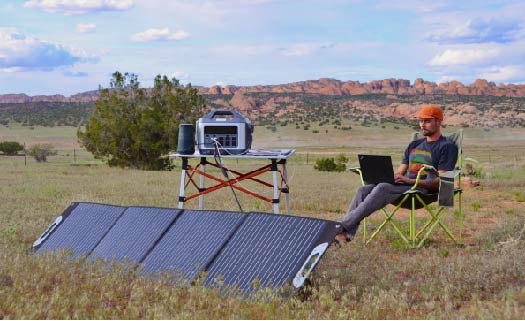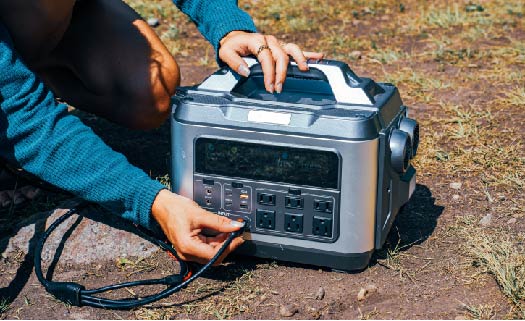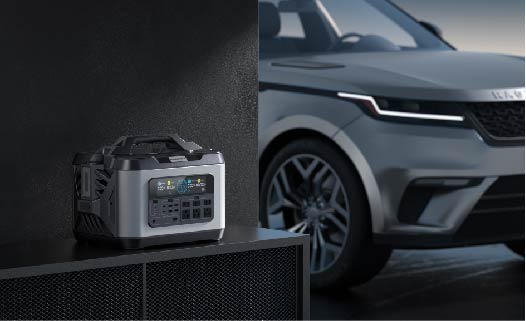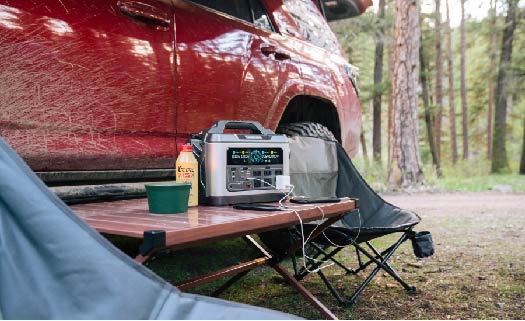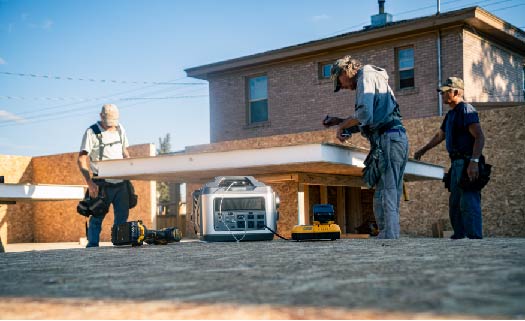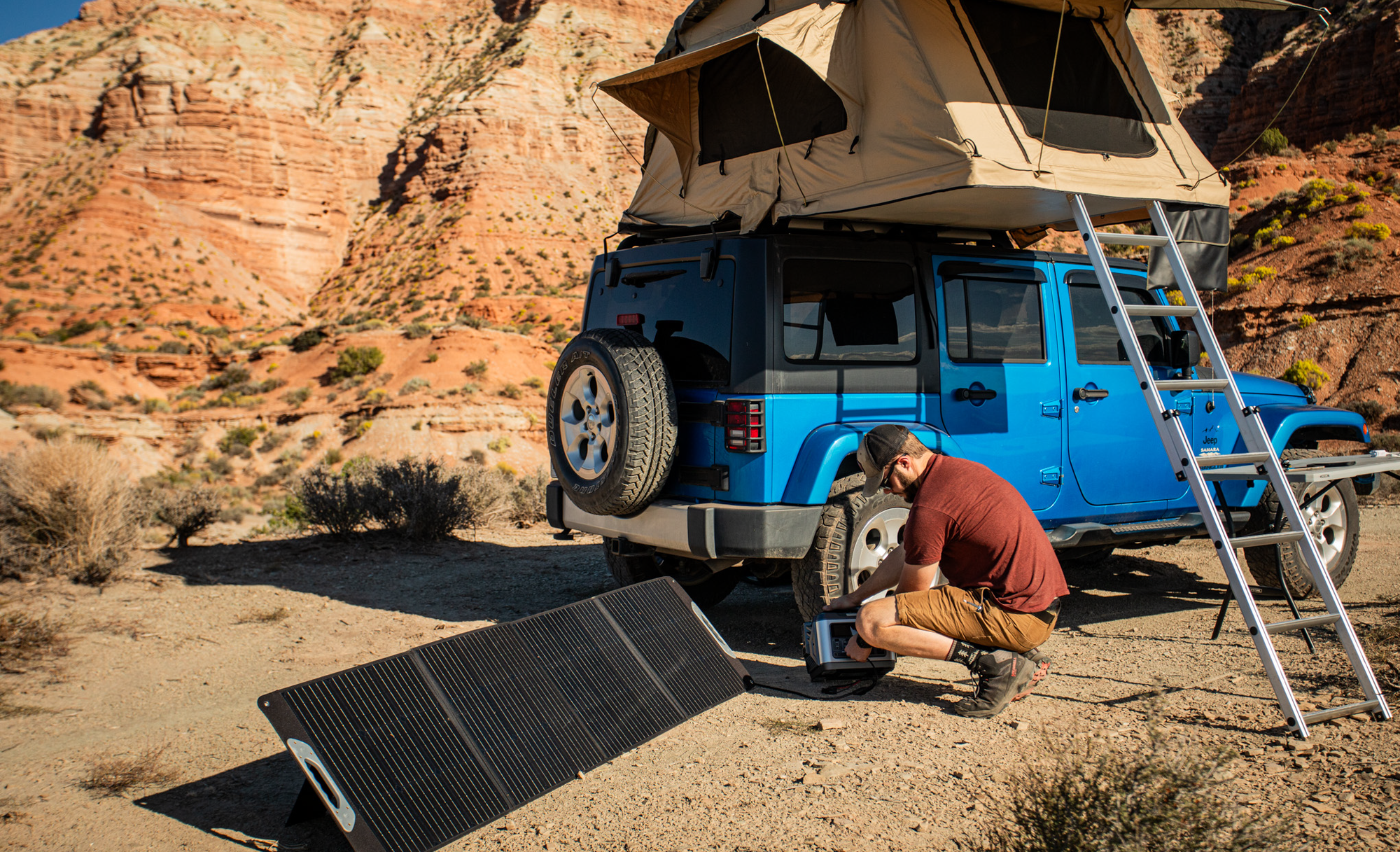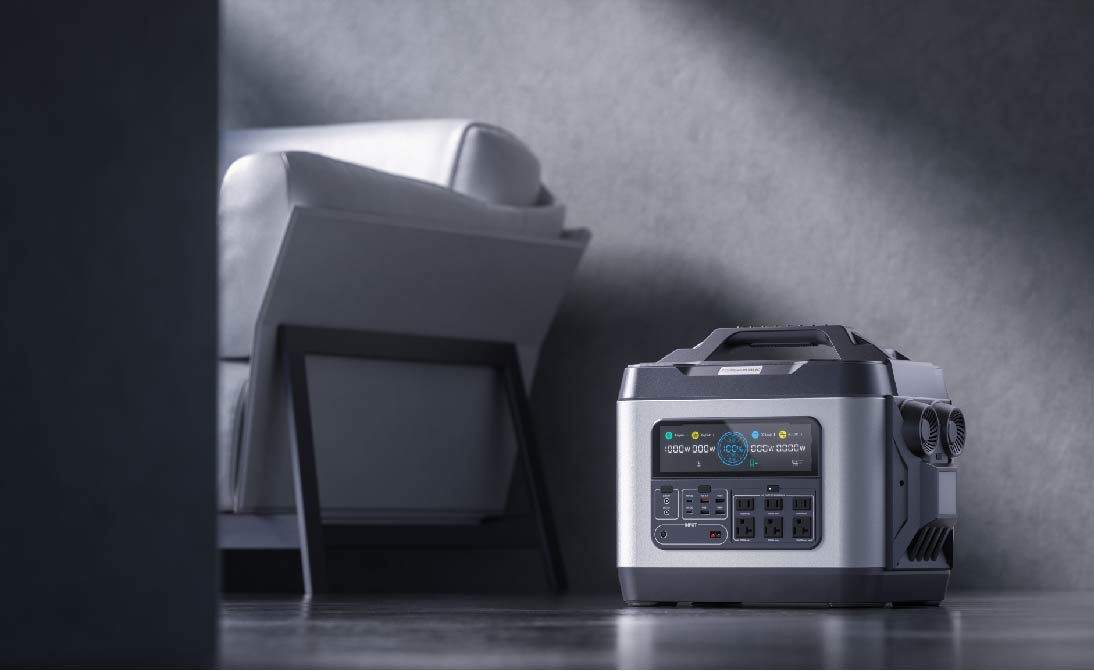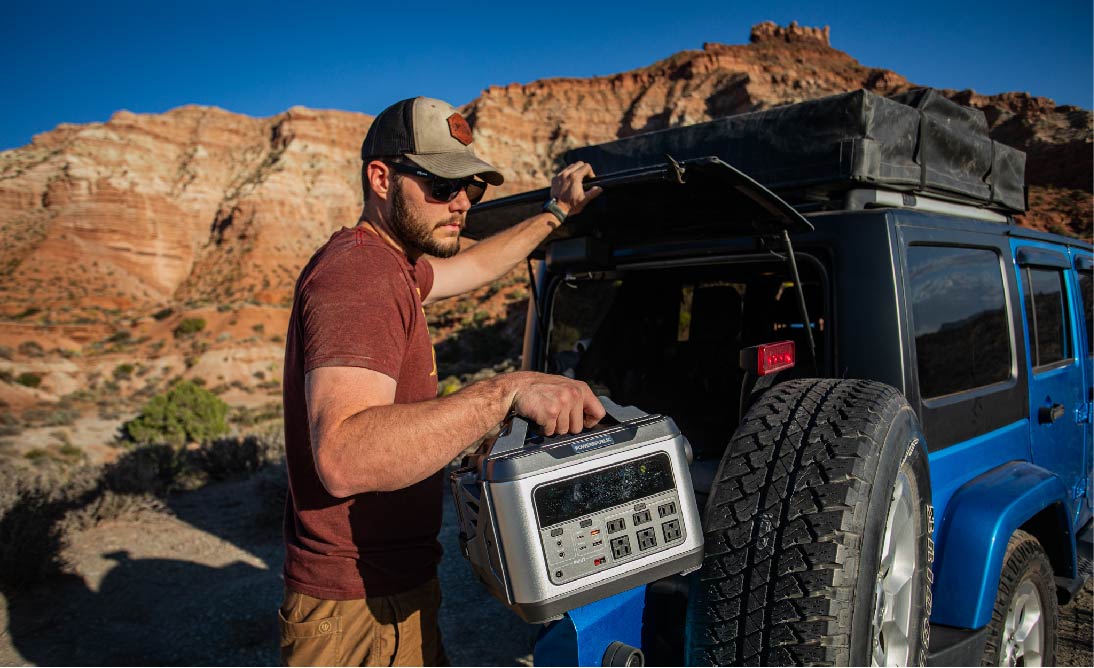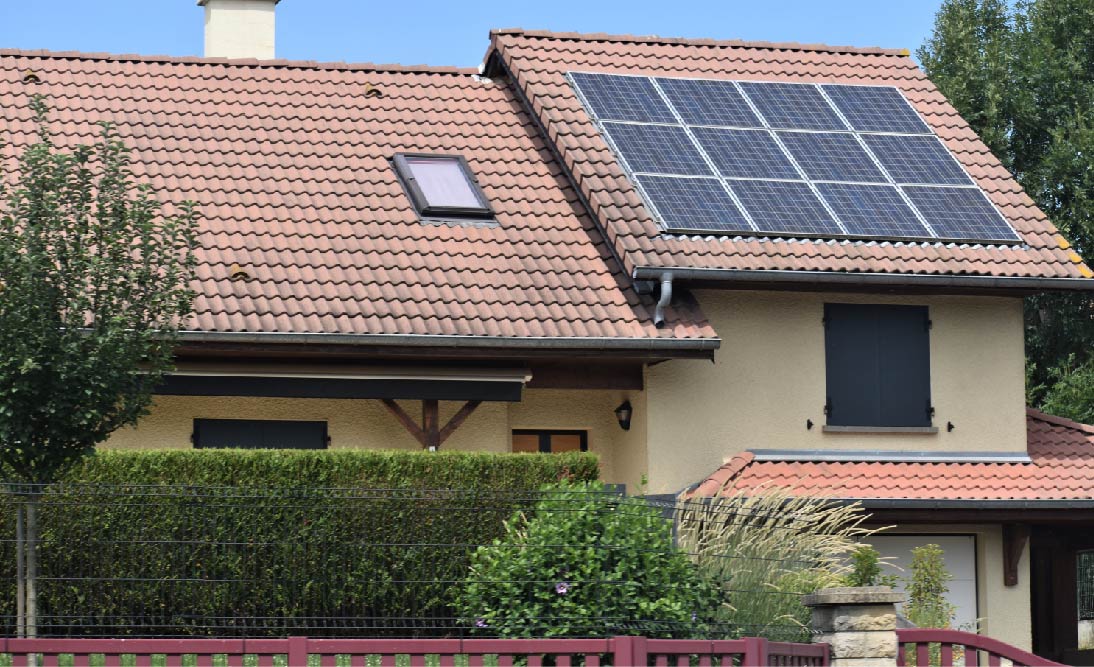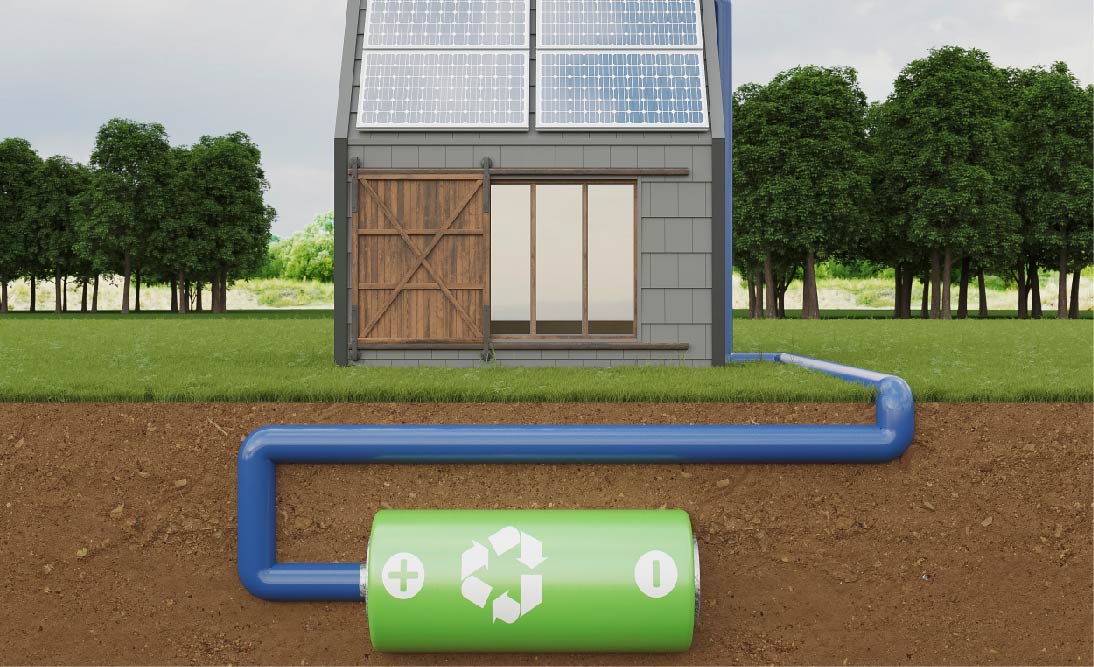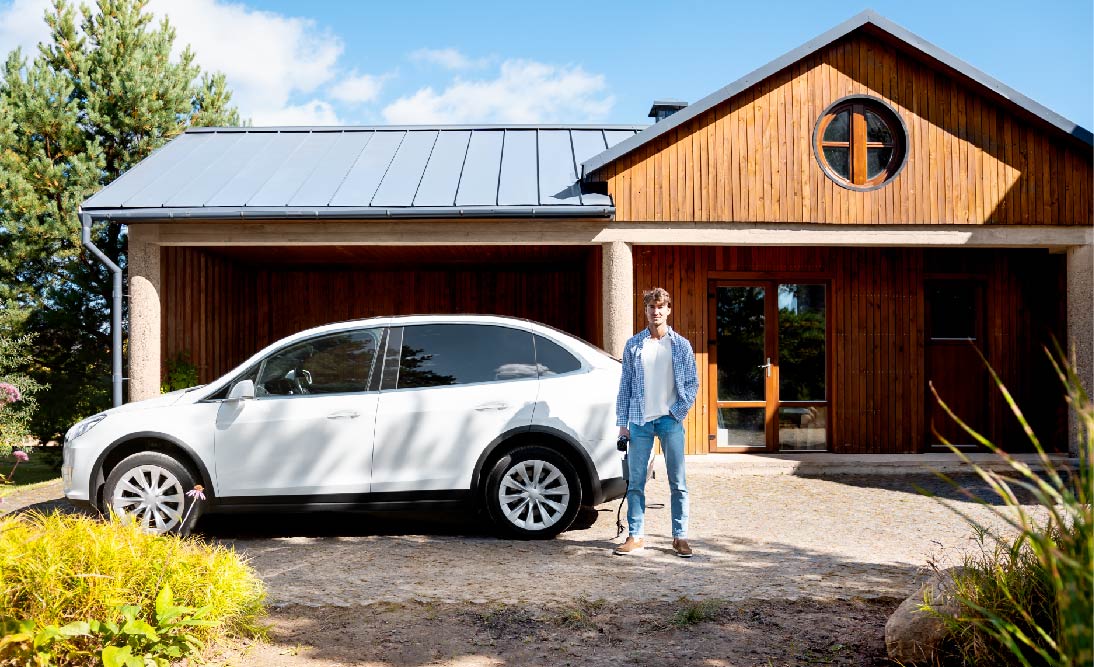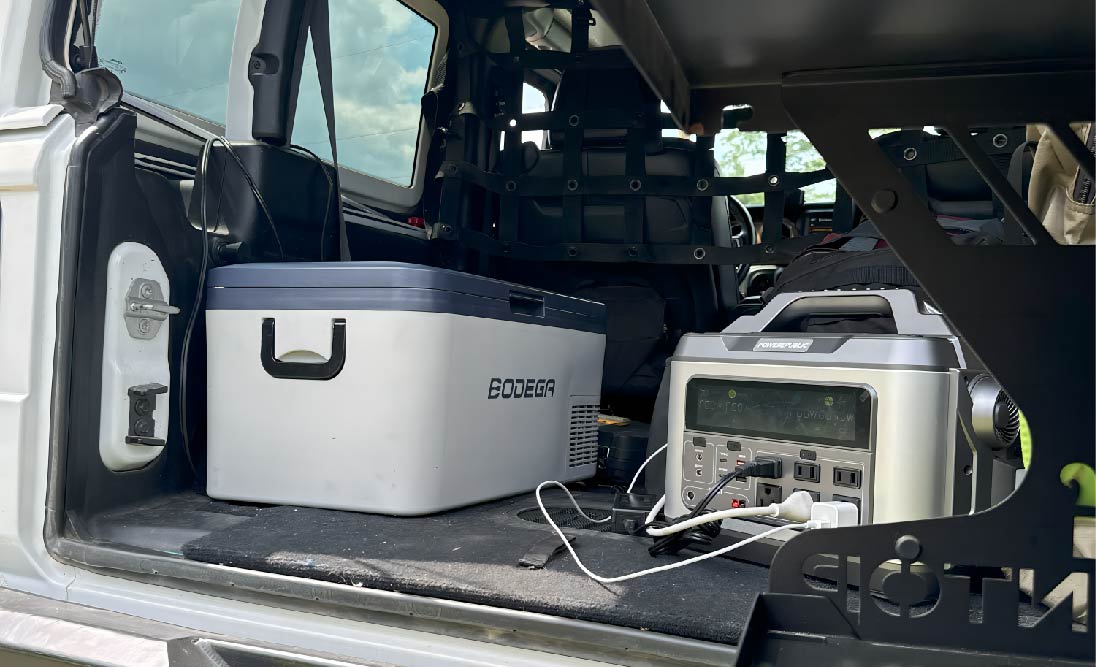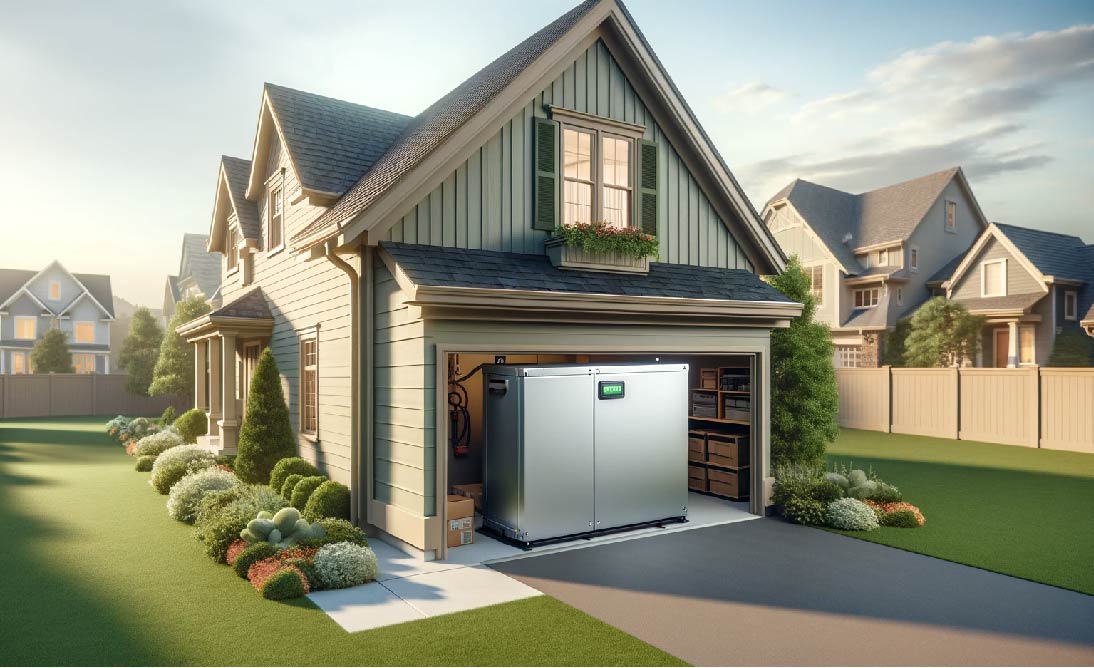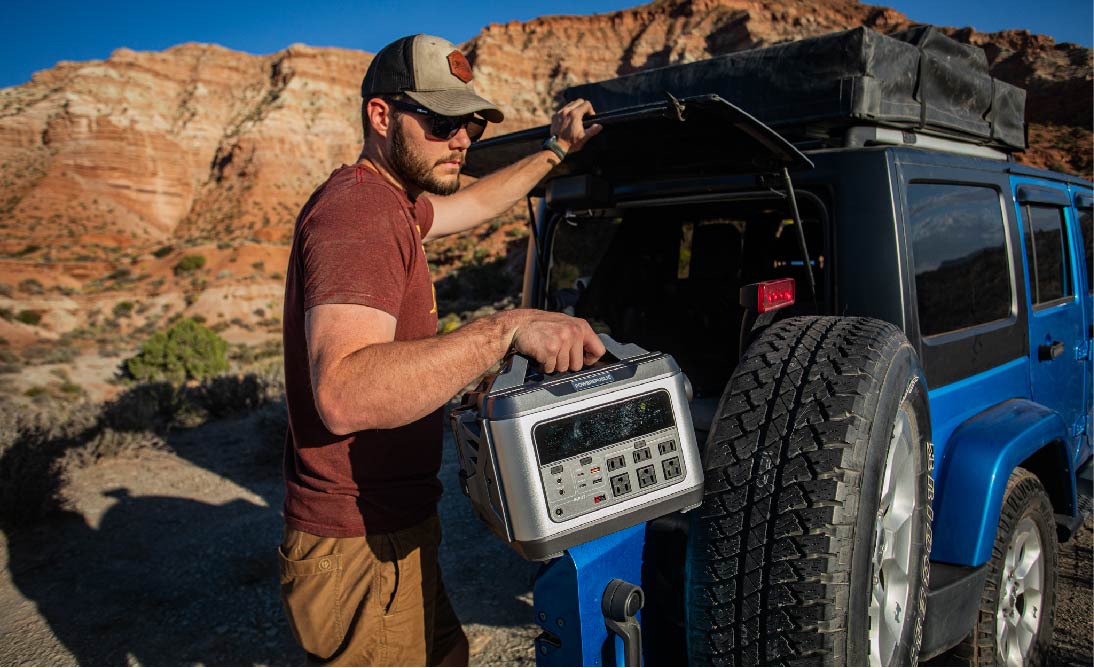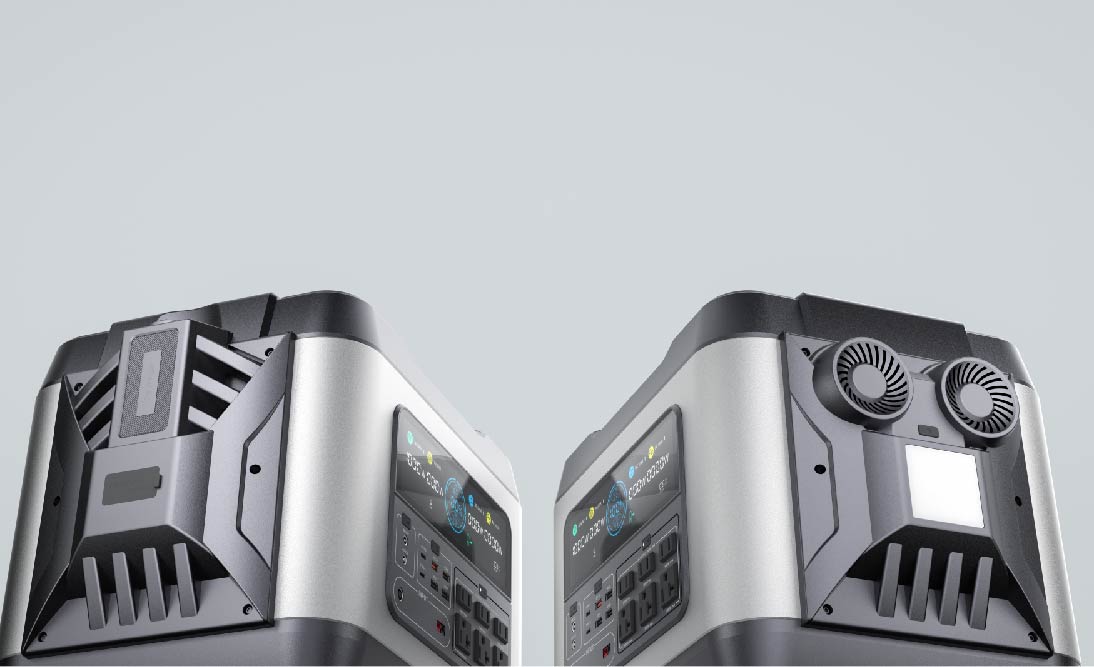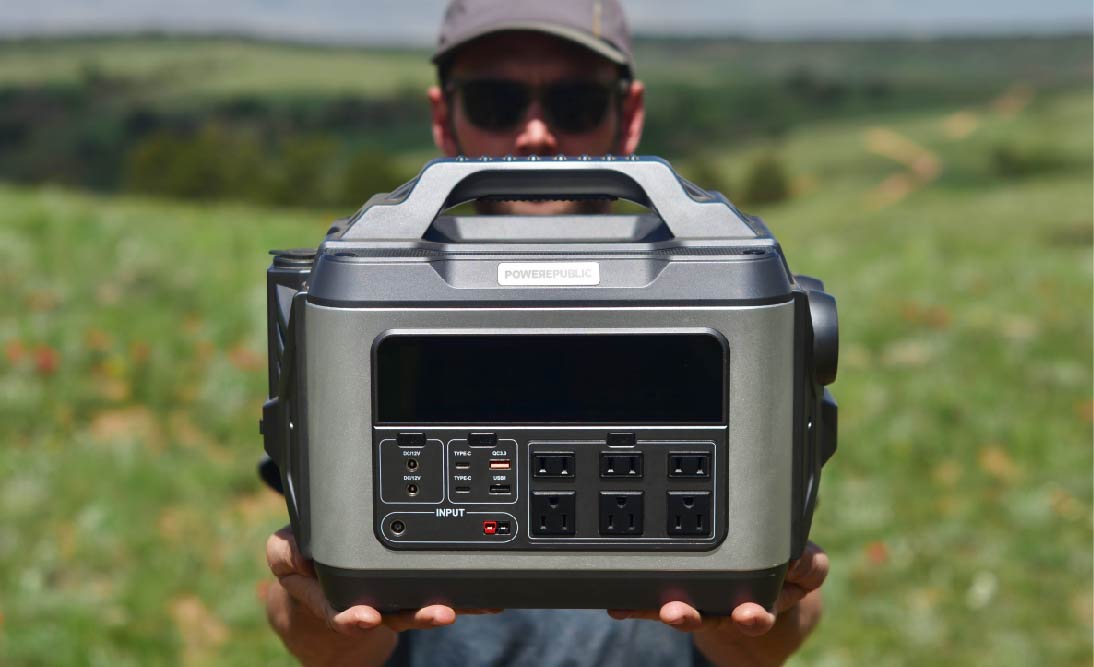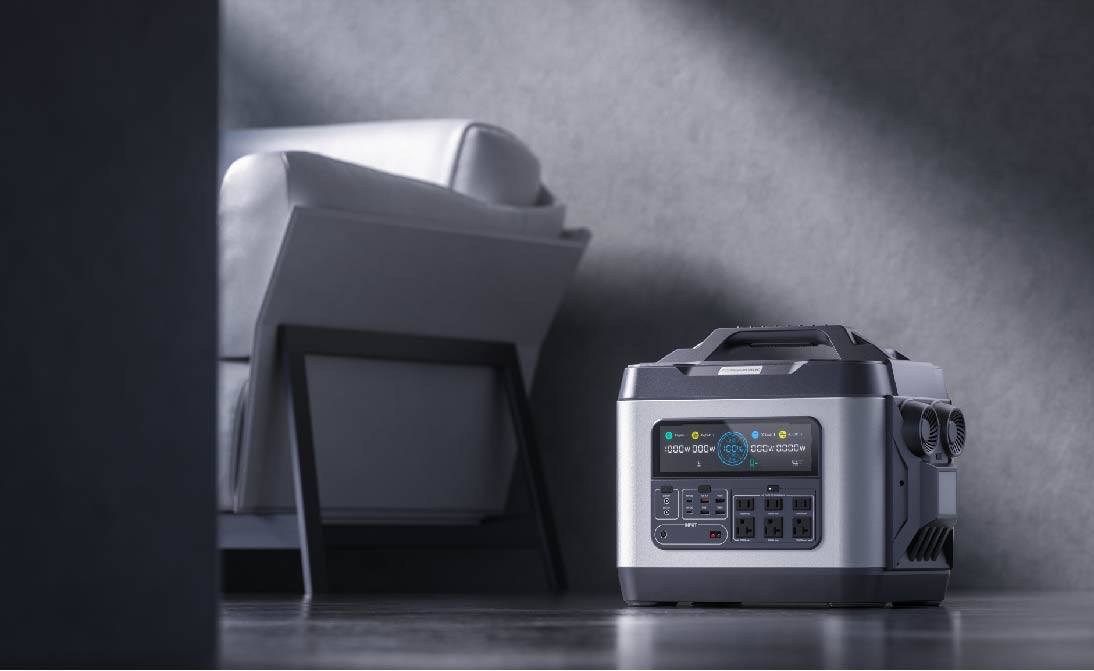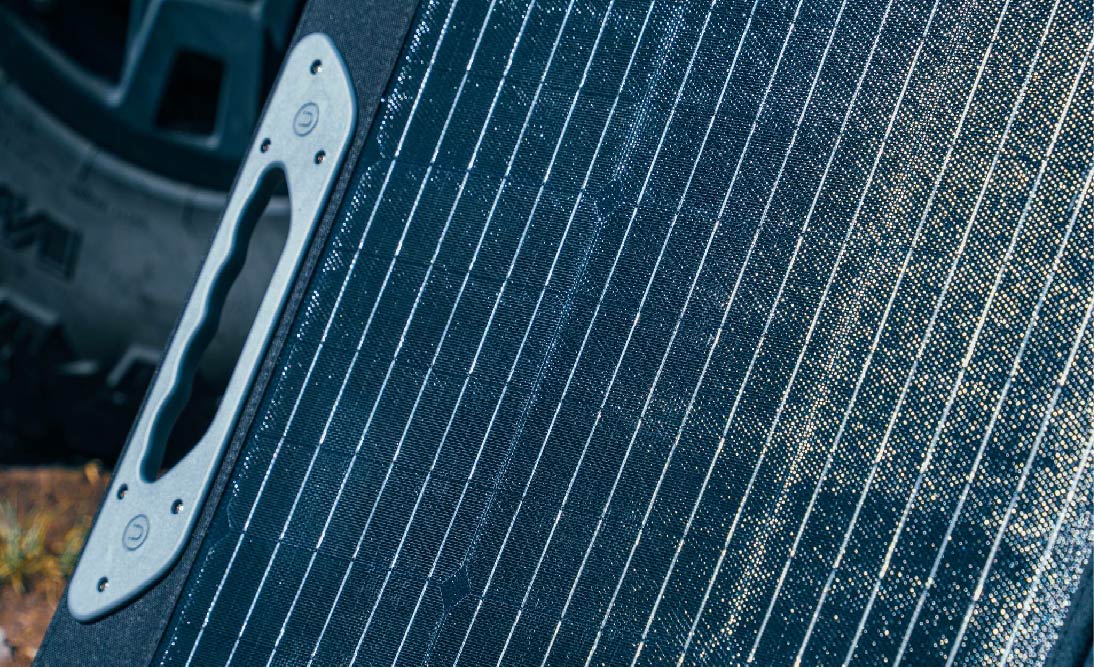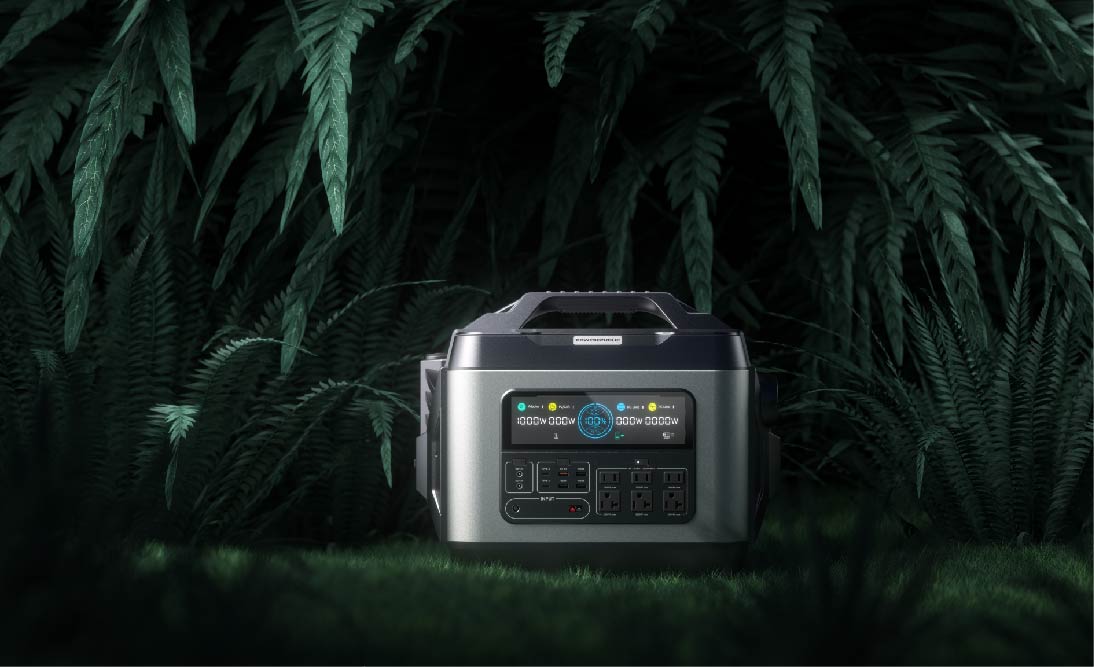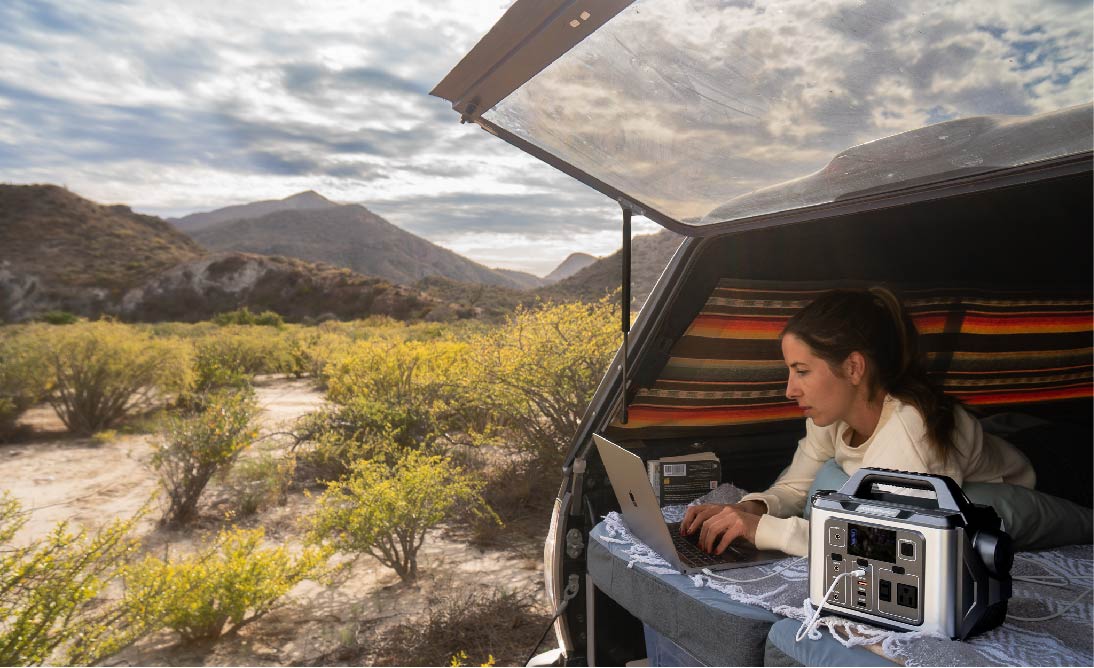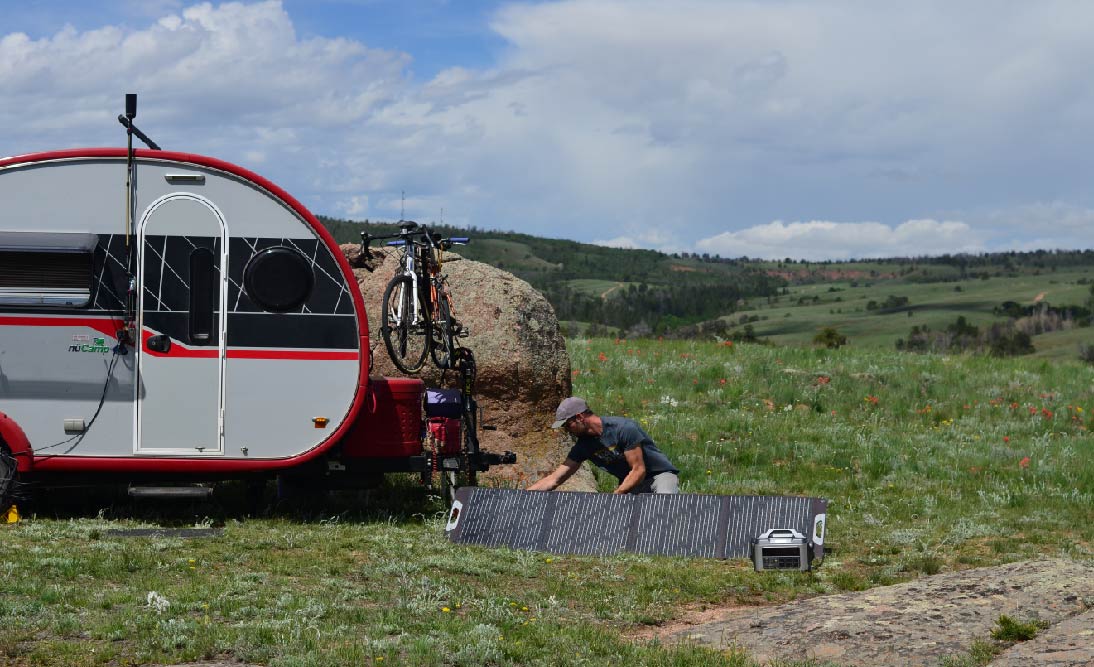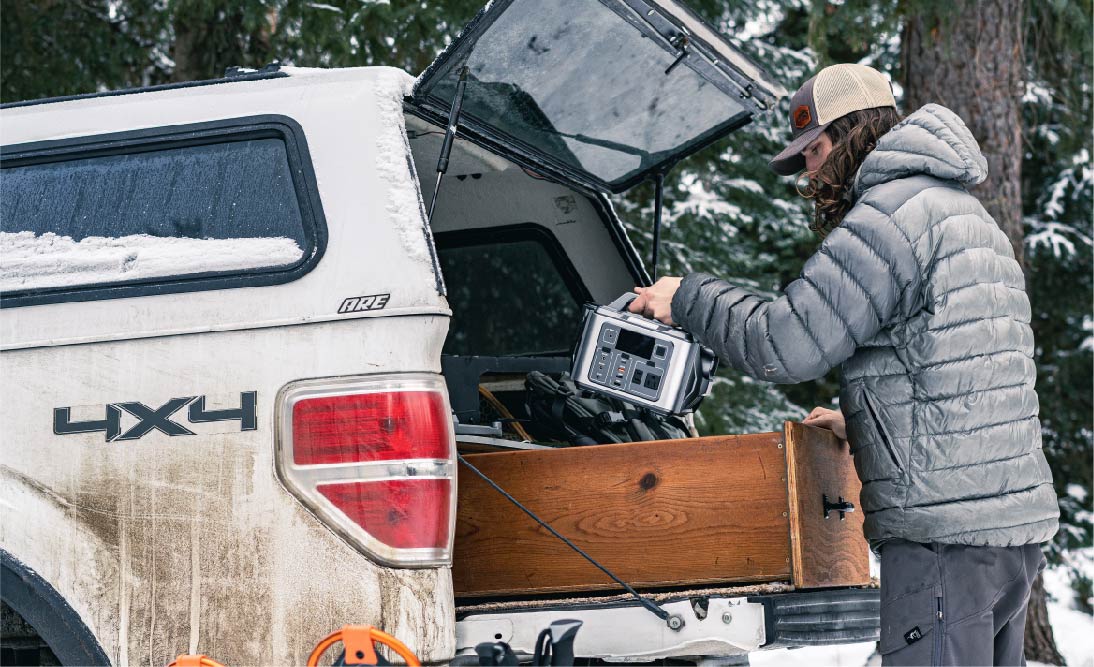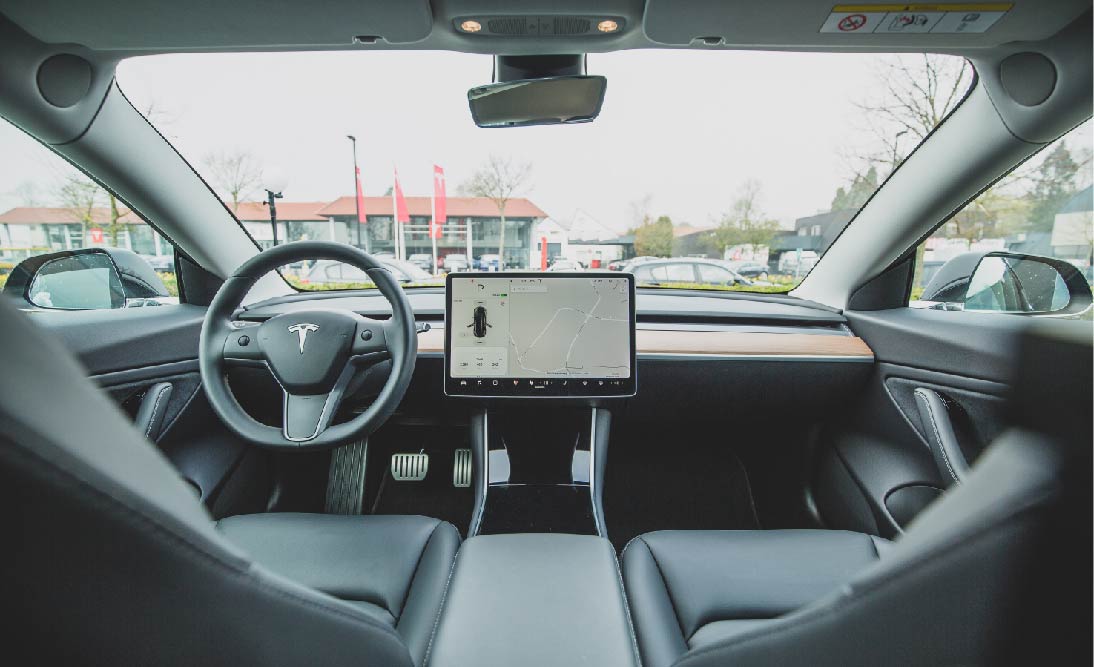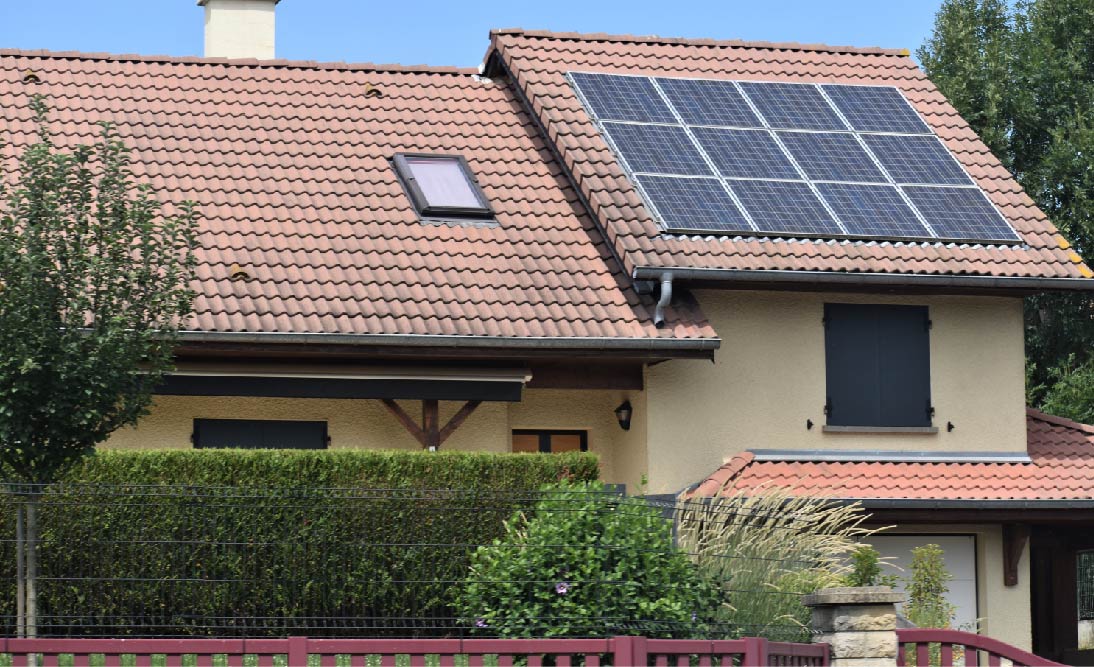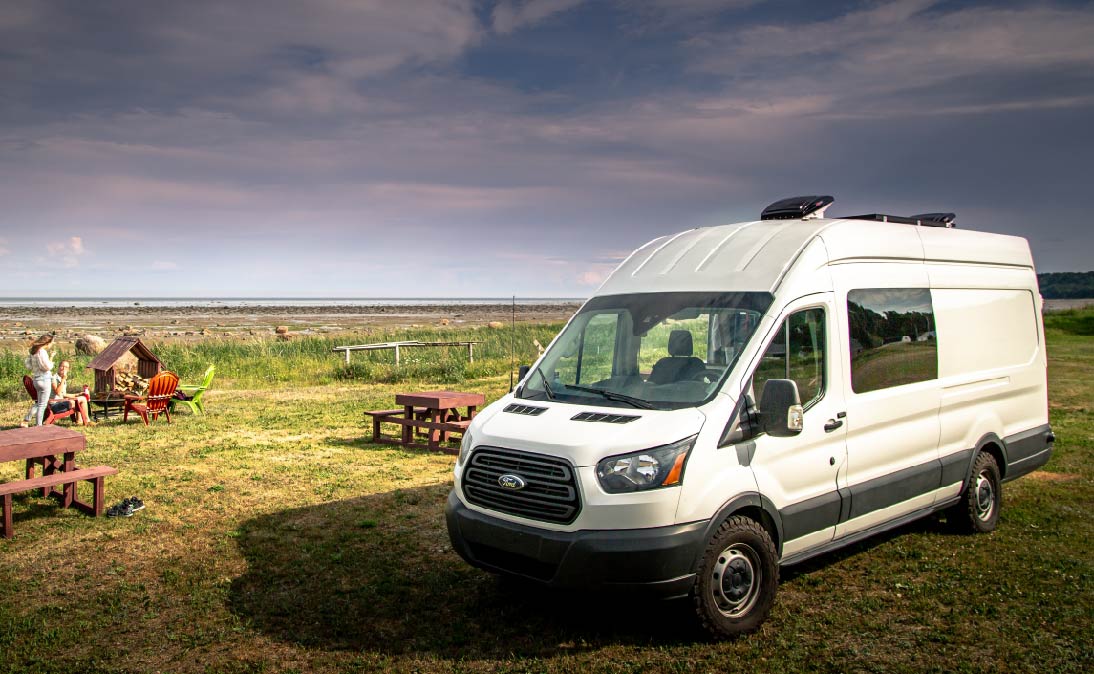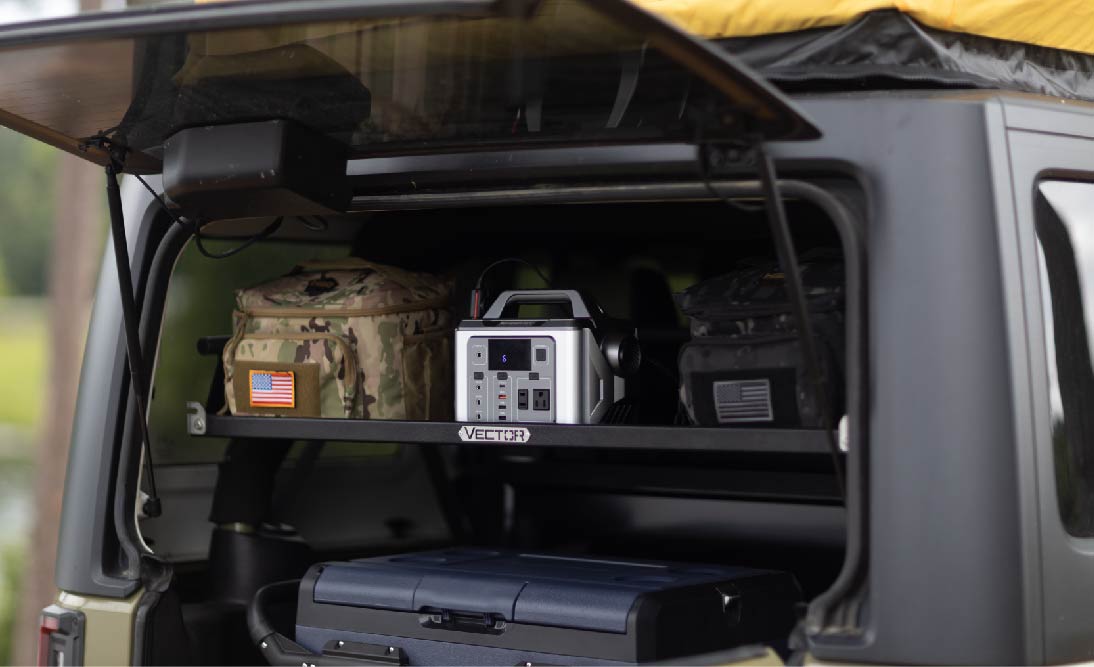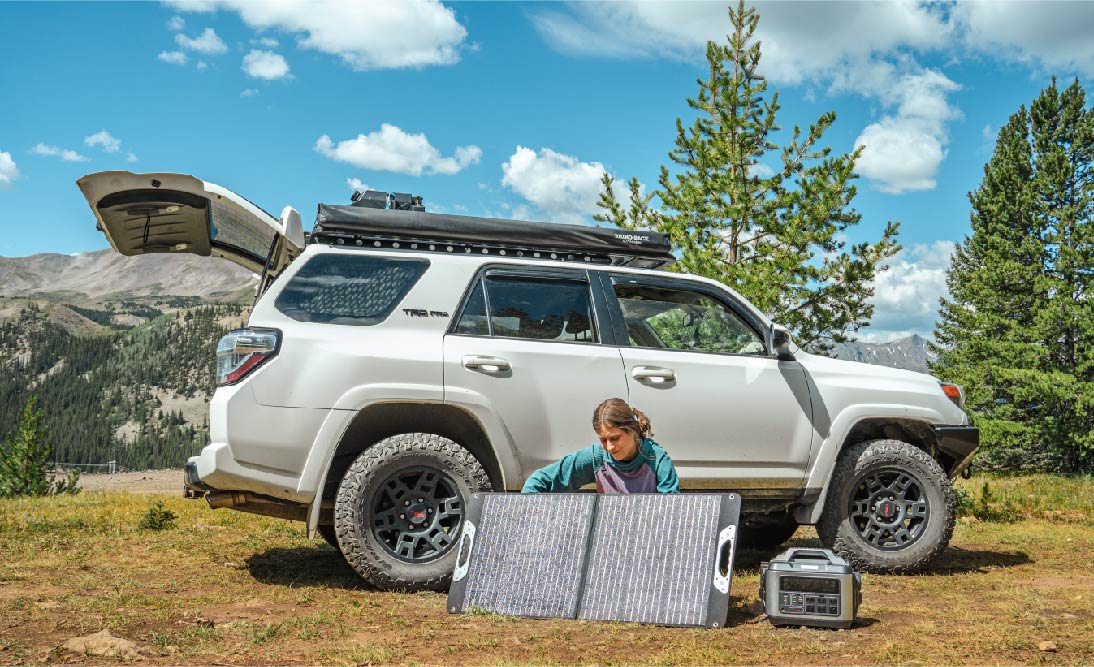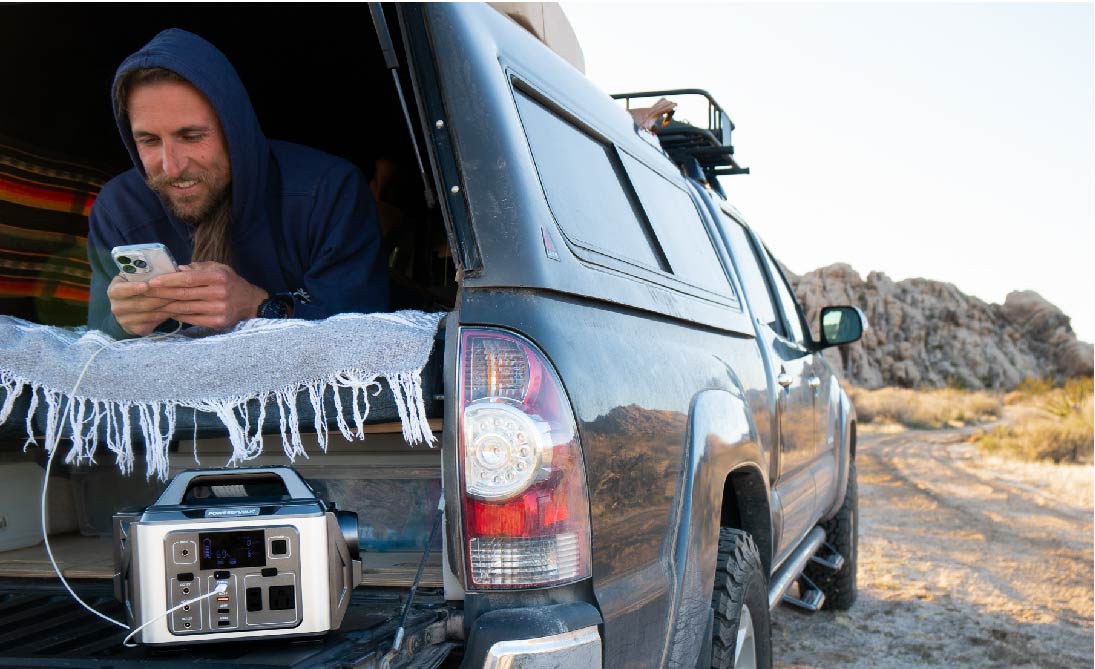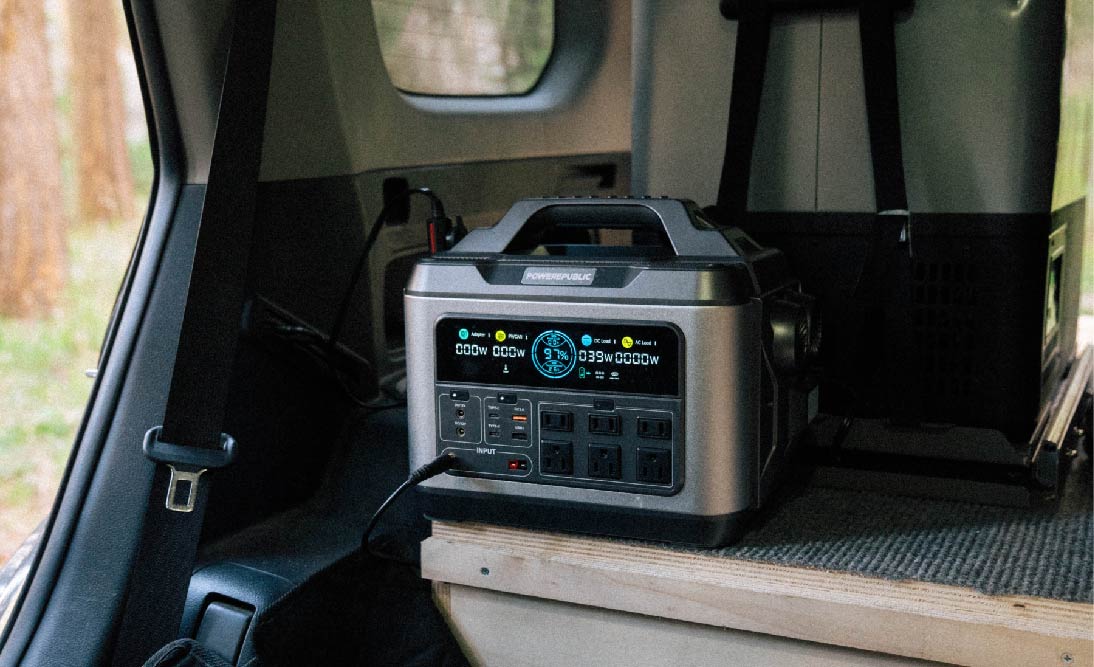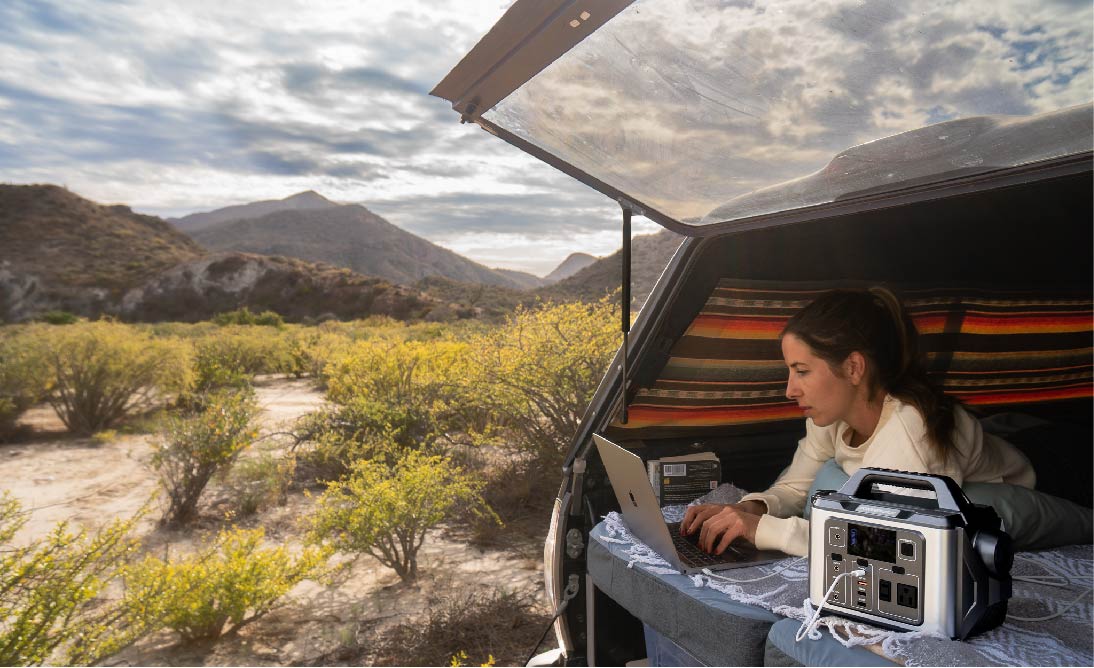Table of Contents:
-
FAQ I: How Do I Determine The Battery Capacity For My House?
-
FAQ III: How Do I Determine The Total Wattage Of Solar Panels?
The increasing demand for emergency power solutions is a sign that more and more people living in rural areas or areas with extreme weather are seeking reliable and long-lasting power sources or UPS for unexpected power outages. For appliances such as refrigerators, TVs, CPAP machines, water heaters, space heaters, air conditioners, and so forth, having a home battery backup or a UPS will keep them running to maintain your daily life until the power is back on the grid.
In this article, we will give a brief explanation of home battery backups—what they are, the common types, how they operate, their price, pros and cons, and how to select the best home battery backup for your needs.
What are Home Battery Backup Systems?

In short, a home battery backup system, also known as an energy storage system, is designed to store electrical energy for later use, providing a reliable power source during outages or when electricity demand is high.
Main Components of Home Battery Backup Systems and Their Functions
Battery Storage Unit
-
Type of Battery: The heart of the system is the battery storage unit, typically utilizing advanced lithium-ion technology due to its high energy density, longer lifespan, and efficiency compared to traditional lead-acid batteries.
-
Capacity: The battery's capacity is measured in kilowatt-hours (kWh) and determines how much energy can be stored. It's essential to choose a capacity that aligns with your household's energy needs during outages.
Inverter
-
Inverter Type: An inverter is crucial for converting the DC stored in the battery into AC for household use. Pure sine wave inverters are preferred for their ability to deliver clean and stable power, suitable for sensitive electronic devices.
-
Power Output: The inverter's power output capacity should match or exceed the maximum power demand of your home to ensure it can support all essential appliances during an outage.
Charge Controller
-
Solar Panel Integration: In systems with solar panels, a charge controller is employed to regulate the voltage and current from the solar array. It prevents overcharging and optimizes the charging process.
-
MPPT Technology: Maximum Power Point Tracking (MPPT) technology in the charge controller maximizes the efficiency of solar energy harvesting by dynamically adjusting the electrical operating point of the solar panels.
Monitoring System
-
Real-Time Data: Modern home battery backup systems come equipped with sophisticated monitoring systems. These provide real-time data on energy production, consumption patterns, battery status, and historical performance, accessible through user-friendly interfaces like mobile apps or online portals.
Transfer Switch
-
Automatic Switching: The transfer switch ensures a seamless transition between grid power and battery backup during an outage. Automatic switching prevents disruptions, allowing essential appliances to continue running without interruption.
Optional Solar Panels
-
Solar Array Configuration: If solar panels are included, they are typically installed on the roof or in an open area with maximum sun exposure. The number and configuration of panels depend on factors such as available space, local sunlight conditions, and energy requirements.
-
Inverter Compatibility: The solar panels connect to the charge controller, which, in turn, is compatible with the inverter. This ensures efficient energy conversion and storage.
Understanding the nuances of each component allows homeowners to tailor their home battery backup system to specific energy needs and preferences.
Types Of Home Battery Backup Systems For Power Outages

There are various types of home battery backup systems, each with its characteristics and applications. Here are some common types:
Uninterruptible Power Supply (UPS)
-
A UPS is a compact, standalone system designed to provide short-term power during brief outages. It is commonly used to protect sensitive electronic equipment, such as computers and networking devices, from power fluctuations.
-
Use Case: Ideal for small-scale applications where immediate, short-term power is critical, like home offices.
Whole-House Battery Backup Systems
-
These systems are designed to power an entire household during outages. They are typically larger and provide a more extended backup duration than UPS units.
-
Use Case: Suitable for homeowners who want a comprehensive solution to keep all household appliances running during power outages.
Grid-Tied Battery Systems
-
These systems are connected to the grid and store excess energy generated by solar panels or during times of low energy demand. They allow homeowners to use stored energy during peak demand periods or outages.
-
Use Case: Ideal for reducing reliance on the grid and optimizing the use of renewable energy sources.
Off-Grid Battery Systems
-
Off-grid systems operate independently of the utility grid and are often used in remote locations or areas without reliable access to electricity. They rely on a combination of batteries and renewable energy sources, such as solar panels or wind turbines.
-
Use Case: Commonly used in cabins, remote homes, or locations where connecting to the grid is impractical or expensive.
Hybrid Battery Systems
-
Hybrid systems combine features of grid-tied and off-grid systems. They can be connected to the grid but also can operate independently during outages.
-
Use Case: Offers flexibility for homeowners who want both grid support and the ability to function autonomously when needed.
Portable Power Stations/Solar Generator Kits
-
These are compact, portable battery systems equipped with inverters and multiple outlets. They are often used for camping, outdoor events, or as a backup power source for small appliances.
-
Use Case: Suitable for those who need on-the-go power or a temporary backup solution for essential devices.
Peak Shaving Systems
-
These systems help reduce peak demand charges by drawing power from batteries during times of high electricity demand. They can be integrated into larger commercial or residential setups.
-
Use Case: Ideal for businesses or homes looking to minimize electricity costs by avoiding peak demand charges.
Understanding the specific features and applications of these different types of home battery backup systems is crucial for choosing the right solution based on individual needs, location, and energy consumption patterns.
Price Range Of Home Battery Backup Systems

After learning about the different types of home battery backup systems, many people may be curious about how much they cost. Let's refer to the table below:
|
Type of Battery Backup System |
Price Range |
Notes |
|
Uninterruptible Power Supply (UPS) |
$50 - $500+ |
Depends on capacity and features. |
|
Whole-House Battery Backup Systems |
$5,000 - $15,000+ |
Varies based on capacity and installation. |
|
Grid-Tied Battery Systems |
$10,000 - $20,000+ |
Includes costs for solar panels and inverters. |
|
Off-Grid Battery Systems |
$15,000 - $30,000+ |
Depends on capacity and renewable sources. |
|
Hybrid Battery Systems |
$8,000 - $20,000+ |
Combines grid-tied and off-grid features. |
|
Portable Power Stations/Solar Generators |
$200 - $2,000+ |
Smaller capacity, suitable for temporary use. |
|
Peak Shaving Systems |
$10,000 - $25,000+ |
Integrated into larger setups for peak shaving. |
Please Note That:
-
Prices are approximate and may vary based on the brand, capacity, and additional features.
-
Installation costs are not included in these estimates and can significantly impact the total cost.
-
Prices in USD may differ based on geographic location, local regulations, and market conditions.
It's essential to obtain quotes from reputable suppliers or installers to get accurate pricing tailored to your specific needs and location.
Pros and Cons of Having a Home Battery Backup For Power Outages

Having reliable power sources during power outages is important. Before setting up a home battery backup system, let’s explore some pros and cons so that you can gain a better understanding of what to expect.
Pros of Having a Home Battery Backup During Power Outages
-
Continuous Power Supply: Ensures uninterrupted power to critical appliances, preventing disruptions during outages. This is crucial for maintaining the functionality of essential devices such as refrigerators, medical equipment, and security systems.
-
Grid Independence: Reduces reliance on the grid, providing autonomy and reliability, especially in areas prone to frequent power disruptions. This independence enhances overall energy security, allowing your home to function independently.
-
Time-of-Use Savings: Allows homeowners to take advantage of time-of-use pricing by storing energy when rates are low and using stored energy during peak hours. This can lead to substantial cost savings over time, optimizing electricity consumption.
-
Integration with Solar Panels: Paired with solar panels, the system enables the generation and storage of renewable energy. Excess energy generated during the day can be stored for use during the night or cloudy periods, contributing to sustainability efforts.
-
Increased Energy Efficiency: Optimizes energy consumption patterns by strategically storing excess energy during periods of lower demand and releasing it during high-demand periods. This contributes to more efficient energy utilization.
-
Seamless Transition: Automatic switching between grid power and battery backup ensures a seamless transition, maintaining continuous power without disruptions. This is especially beneficial for keeping essential appliances running without interruption.
Cons of Having a Home Battery Backup During Power Outages
-
Initial Cost: High upfront costs include the purchase and installation of the battery system, inverter, charge controller, and any necessary additional components. The initial investment can be a significant barrier for some homeowners.
-
Limited Power Capacity: Depending on the battery capacity, there may be limitations on the duration and number of appliances that can be sustained during an outage. Understanding the system's limitations is crucial for meeting specific energy needs.
-
Maintenance Costs: Ongoing maintenance expenses may include periodic battery replacements, particularly for lithium-ion batteries with a finite lifespan. Understanding and budgeting for these costs are essential for the long-term viability of the system.
-
Environmental Impact: The manufacturing and disposal of batteries, especially lithium-ion batteries, can have environmental consequences. Sustainable disposal practices and recycling efforts are critical to minimizing the ecological footprint.
-
Efficiency Loss: Energy losses occur during the conversion process (DC to AC) and when stored in the battery. Understanding these efficiency losses helps homeowners gauge the overall effectiveness of the system.
-
Dependence on Sunlight (for Solar-Powered Systems): Solar-powered systems are dependent on sunlight. Cloudy days or nighttime can limit the effectiveness of solar energy generation, requiring reliance on the grid or stored energy.
-
Space Requirements: Homeowners need sufficient space for both the battery unit and, if applicable, solar panels. Space constraints may impact the feasibility of installing such systems, especially in smaller residences.
Factors To Consider When Setting Up a Home Battery Backup System

Choosing the BEST home battery backup system is not easy.
Here, BEST doesn’t indicate the cheapest; rather, it stands for whether the system can efficiently cover all your power needs during power outages within your budget. So let’s take a look at some common factors to consider before having your own home battery backup system.
Power Needs
-
Identify critical appliances such as refrigerators, medical devices, or security systems. Calculate their power consumption in watts or kilowatt-hours per day.
-
Example: A refrigerator may consume 150 watts per hour. Over a day, it would need 3.6 kWh (150 watts x 24 hours). If you want to cover a 3-day outage, your total power needed for the refrigerator is 10.8 kWh (3.6 kWh/day x 3 days).
Battery Capacity
-
Choose a battery with a capacity that can handle your calculated power needs. Consider the Depth of Discharge (DoD), indicating the percentage of a battery's capacity that can be used.
-
Example: If your total power needs are 10.8 kWh and you choose a battery with 20 kWh capacity and 80% DoD, you have 16 kWh usable capacity (20 kWh x 0.8), providing a safety margin.
Budget
-
Consider your budget to cover the entire system, including the battery, inverter, charge controller, and installation costs. Be mindful of any potential hidden costs.
-
Example: If your budget is $8,000, allocate costs, e.g., $4,000 for the battery, $2,000 for the inverter, and $1,000 for installation, leaving room for miscellaneous expenses.
Weather Conditions
-
Assess the sunlight availability in your area. Cloudy or rainy climates may require larger battery capacities or alternative power sources like a generator.
-
Example: If you're in a region with limited sunlight, opt for a larger battery or a hybrid system that can seamlessly switch to grid power when solar energy is insufficient.
System Efficiency
-
Check the efficiency of the battery, inverter, and charge controller. Higher efficiency reduces energy losses during the conversion and storage processes.
-
Example: If your system generates 100 kWh but has 90% efficiency, the usable power is 90 kWh (100 kWh x 0.9), ensuring minimal energy waste.
Scalability
-
Choose a system that allows future expansion. This could involve adding more batteries, increasing solar panel capacity, or upgrading components as your energy needs evolve.
-
Example: If your system supports scalability, adding another battery in the future to accommodate increased power demands ensures adaptability.
Installation and Maintenance
-
Account for installation costs, considering professional installation for complex systems. Check maintenance requirements, including battery lifespan and replacement costs.
-
Example: If installation costs are $1,000 and annual maintenance is estimated at $200, factor these into your overall budget for a more accurate cost assessment.
By delving into these details, you can make informed decisions when setting up a home battery backup system that aligns with your specific needs, climate conditions, and financial considerations.
Some Frequently Asked Questions

How do I determine the battery capacity for my house?
To answer this questions, you can follow the steps below to estimate the capacity of the battery:
1. Identify Appliances:
-
List essential appliances: Refrigerator, Lights, Computer.
2. Determine Power Consumption:
-
Check power ratings (e.g., Refrigerator: 150 W, Lights: 50 W, Computer: 200 W).
3. Calculate Daily Energy Consumption:
-
Estimate daily energy usage: (150 W x 24 hours) + (50 W x 5 hours) + (200 W x 3 hours) = 4.45 kWh.
4. Choose Backup Duration:
-
Decide how many days you want a backup, say 2 days.
5. Calculate Total Battery Capacity:
-
Total Battery Capacity = Daily Consumption x Backup Duration = 4.45 kWh x 2 days = 8.9 kWh.
6. Factor in Efficiency and DoD:
-
Adjust for battery efficiency (e.g., 80% DoD): Required Battery Capacity = 8.9 kWh / 0.8 = 11.125 kWh.
7. Consider Solar Panel Generation:
-
If solar panels generate 3 kWh/day, subtract: Effective Daily Consumption = 4.45 kWh - 3 kWh = 1.45 kWh.
8. Finalize Required Battery Capacity:
-
Required Battery Capacity = Effective Daily Consumption x Backup Duration = 1.45 kWh x 2 days = 2.9 kWh.
By following these simplified steps, you can estimate a battery capacity of approximately 2.9 kWh for your house to cover essential appliances for a 2-day outage. Adjust values based on your specific appliances and needs.
How do I determine the number of solar panels?
To answer this questions, you can follow the steps below to estimate the number of solar panels you need according to your power needs and weather conditions:
1. Identify Total Daily Energy Consumption:
-
Assume your total daily energy consumption is 6 kWh.
2. Consider Sunlight Hours:
-
Check the average daily sunlight hours in your location. Let's assume 6 hours per day.
3. Calculate Daily Solar Energy Production:
-
Daily Solar Energy Production = Total Daily Energy Consumption / Sunlight Hours
-
Daily Solar Energy Production = 6 kWh / 6 hours = 1 kWh/day
4. Account for System Efficiency:
-
Assume an efficiency of 85% for the solar panels.
-
Effective Daily Solar Energy Production = Daily Solar Energy Production x Efficiency
-
Effective Daily Solar Energy Production = 1 kWh/day x 0.85 = 0.85 kWh/day
5. Determine Solar Panel Capacity:
-
Choose solar panels with a specific capacity, e.g., 300 W per panel.
-
Number of Panels = Effective Daily Solar Energy Production / Solar Panel Capacity
-
Number of Panels = 0.85 kWh/day / 0.3 kW/panel = 2.83 panels
6. Round-Up:
-
Round up to the nearest whole number since you can't have a fraction of a panel.
-
You would need 3 solar panels.
This example helps you estimate the number of solar panels required to meet your daily energy consumption, taking into account efficiency and sunlight hours. Adjust values based on your specific situation and the characteristics of the solar panels you choose.
How do I determine the total wattage of solar panels?
Similar to the questions above, to answer this question, you can follow the steps below to estimate the total wattage of solar panels you need according to your power needs:
1. Identify Total Daily Energy Consumption:
-
Assume your total daily energy consumption is 8 kWh.
2. Consider Sunlight Hours:
-
Check the average daily sunlight hours in your location. Let's assume 5 hours per day.
3. Calculate Daily Solar Energy Production:
-
Daily Solar Energy Production = Total Daily Energy Consumption / Sunlight Hours
-
Daily Solar Energy Production = 8 kWh / 5 hours = 1.6 kWh/day
4. Account for System Efficiency:
-
Assume an efficiency of 90% for the solar panels.
-
Effective Daily Solar Energy Production = Daily Solar Energy Production x Efficiency
-
Effective Daily Solar Energy Production = 1.6 kWh/day x 0.9 = 1.44 kWh/day
5. Determine Solar Panel Capacity:
-
Choose solar panels with a specific capacity, e.g., 300 W per panel.
-
Number of Panels = Effective Daily Solar Energy Production / Solar Panel Capacity
-
Number of Panels = 1.44 kWh/day / 0.3 kW/panel = 4.8 panels
6. Round-Up:
-
Round up to the nearest whole number since you can't have a fraction of a panel.
-
You would need 5 solar panels.
7. Calculate Total Wattage:
-
Total Wattage = Number of Panels x Solar Panel Capacity
-
Total Wattage = 5 panels x 300 W/panel = 1500 W or 1.5 kW
This example helps you estimate the total wattage of solar panels needed to meet your daily energy consumption, considering efficiency and sunlight hours. Adjust values based on your specific situation and the characteristics of the solar panels you choose.
Final Thoughts
In conclusion, home battery backup systems offer a crucial solution for reliable power during outages, catering to the increasing demand for emergency power solutions. Understanding the main components, types, and price ranges allows homeowners to tailor their systems to specific energy needs.
Pros such as continuous power supply and grid independence highlight the system's advantages, while cons like initial costs and space requirements underscore important considerations. Factors like power needs, battery capacity, budget, weather conditions, system efficiency, scalability, and installation/maintenance contribute to selecting the best-suited system. By navigating these considerations, individuals can ensure a home battery backup system that efficiently covers power needs during outages within budget constraints, enhancing resilience in the face of unexpected disruptions.
Explore POWEREPUBLIC Solar Generator Kits and Portable Power Stations as home battery backups.
